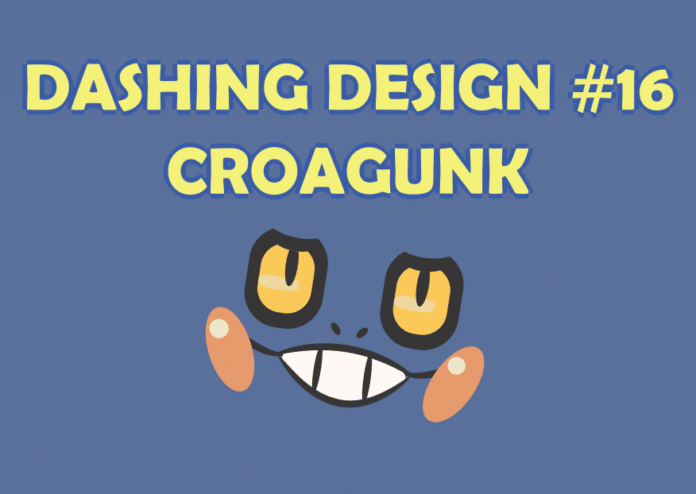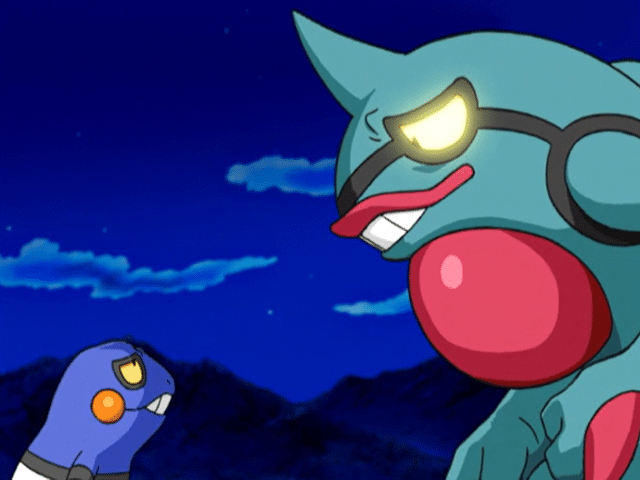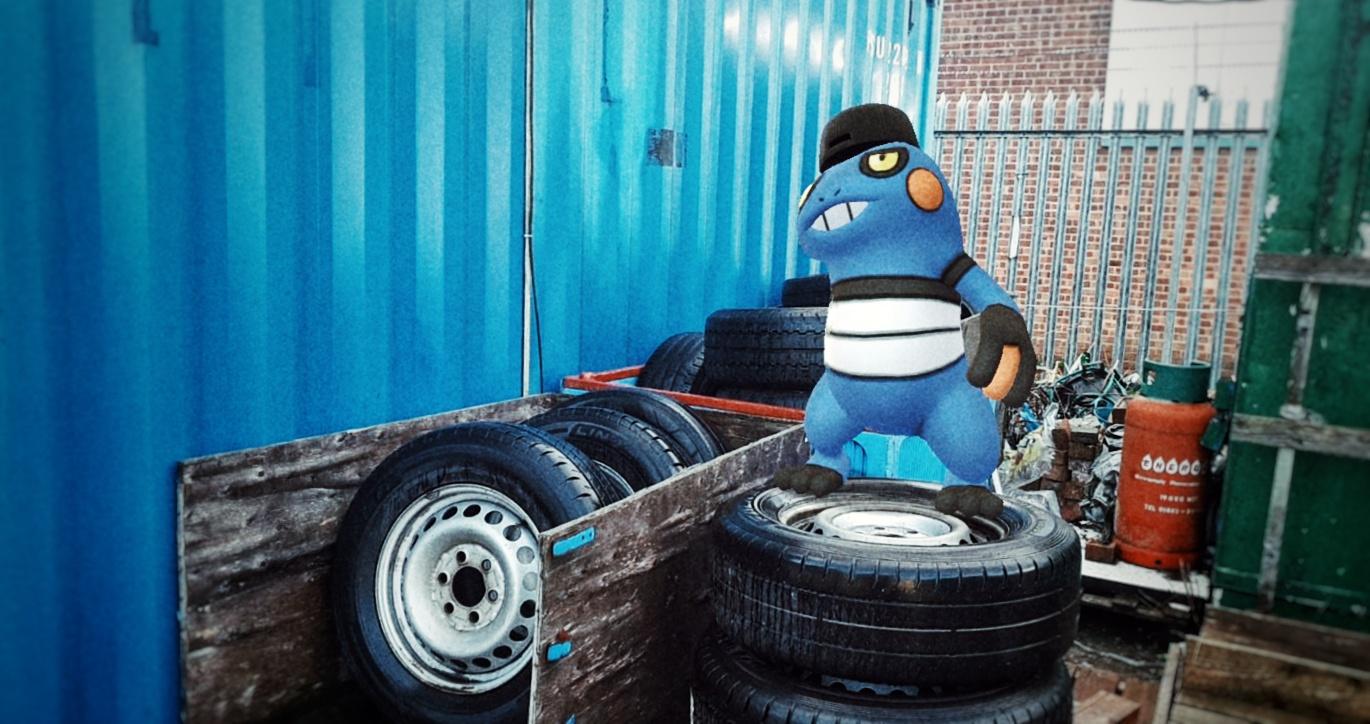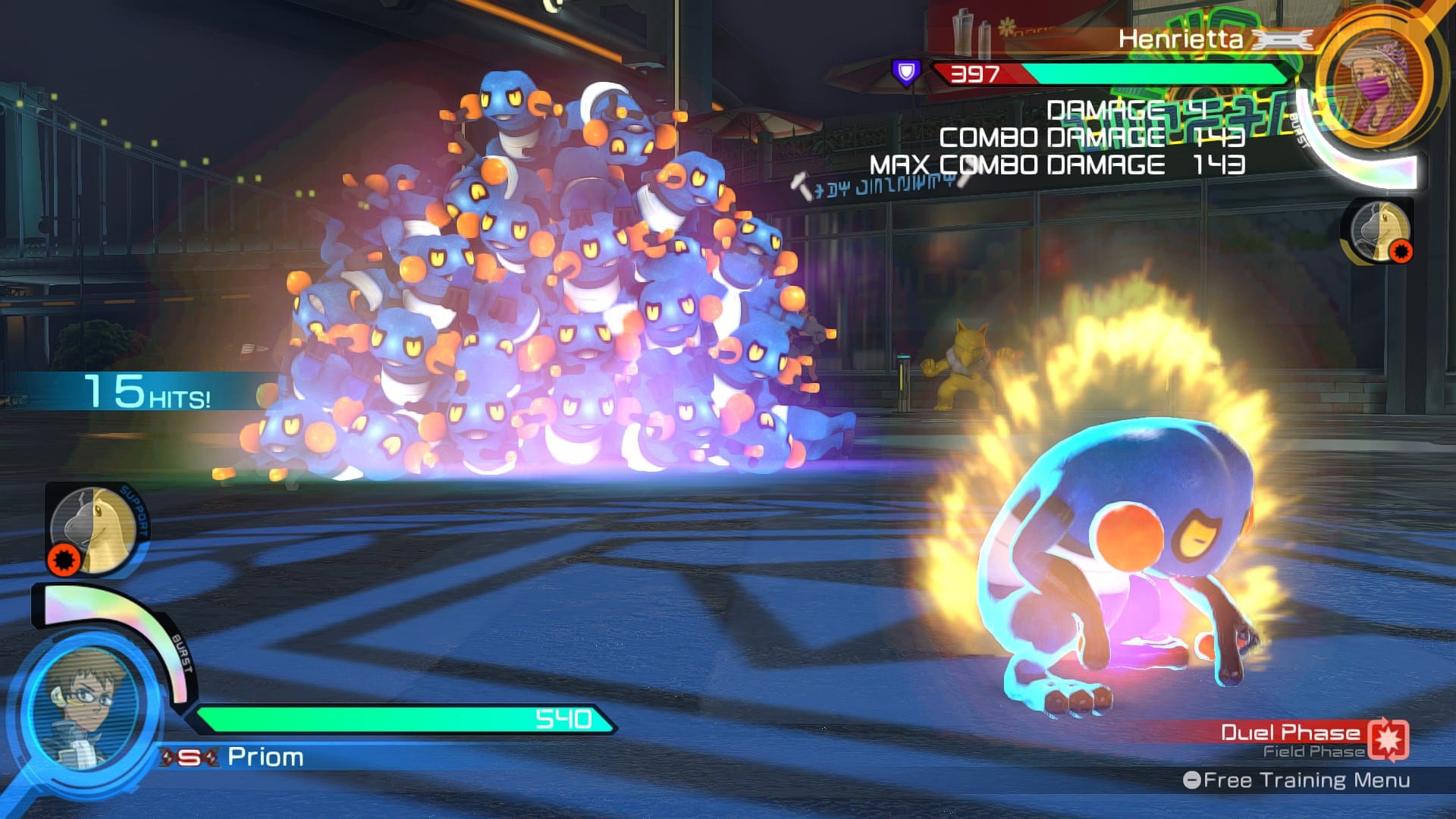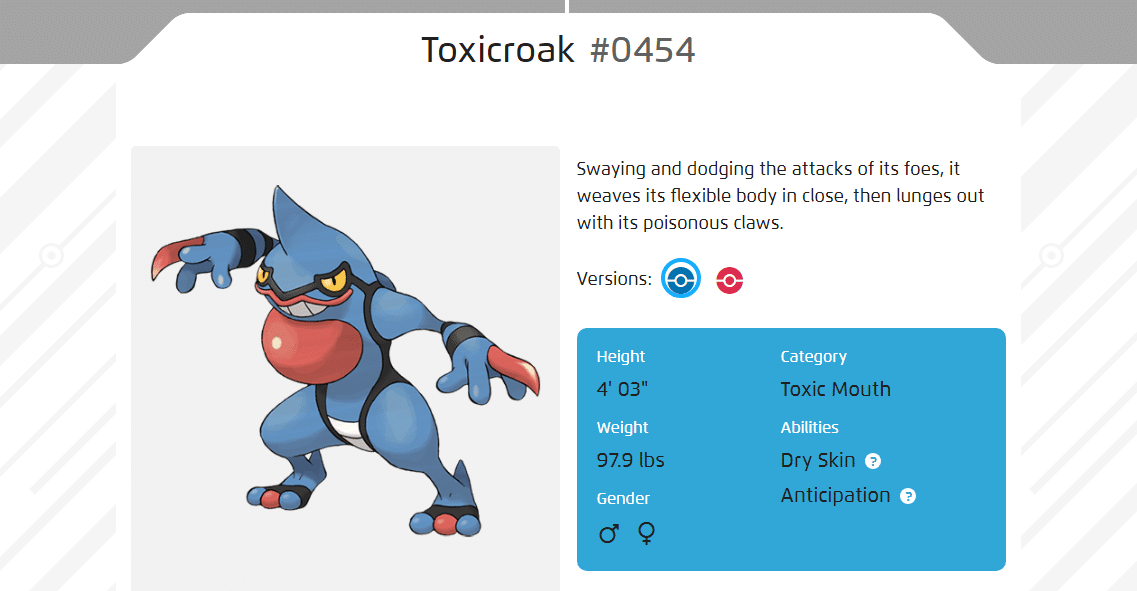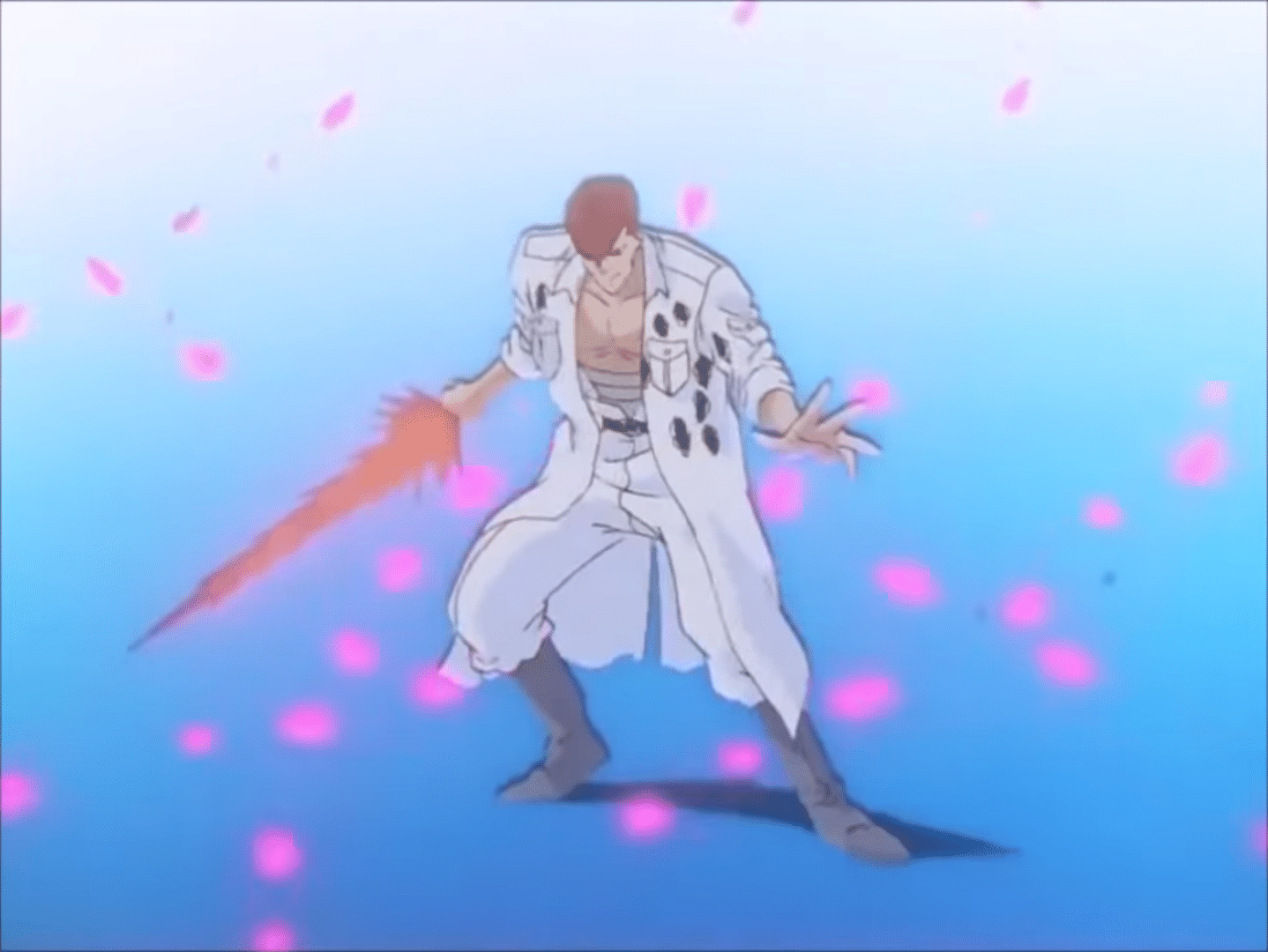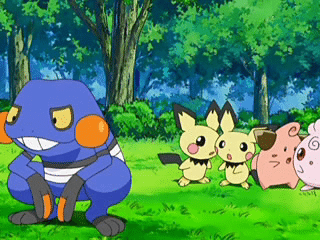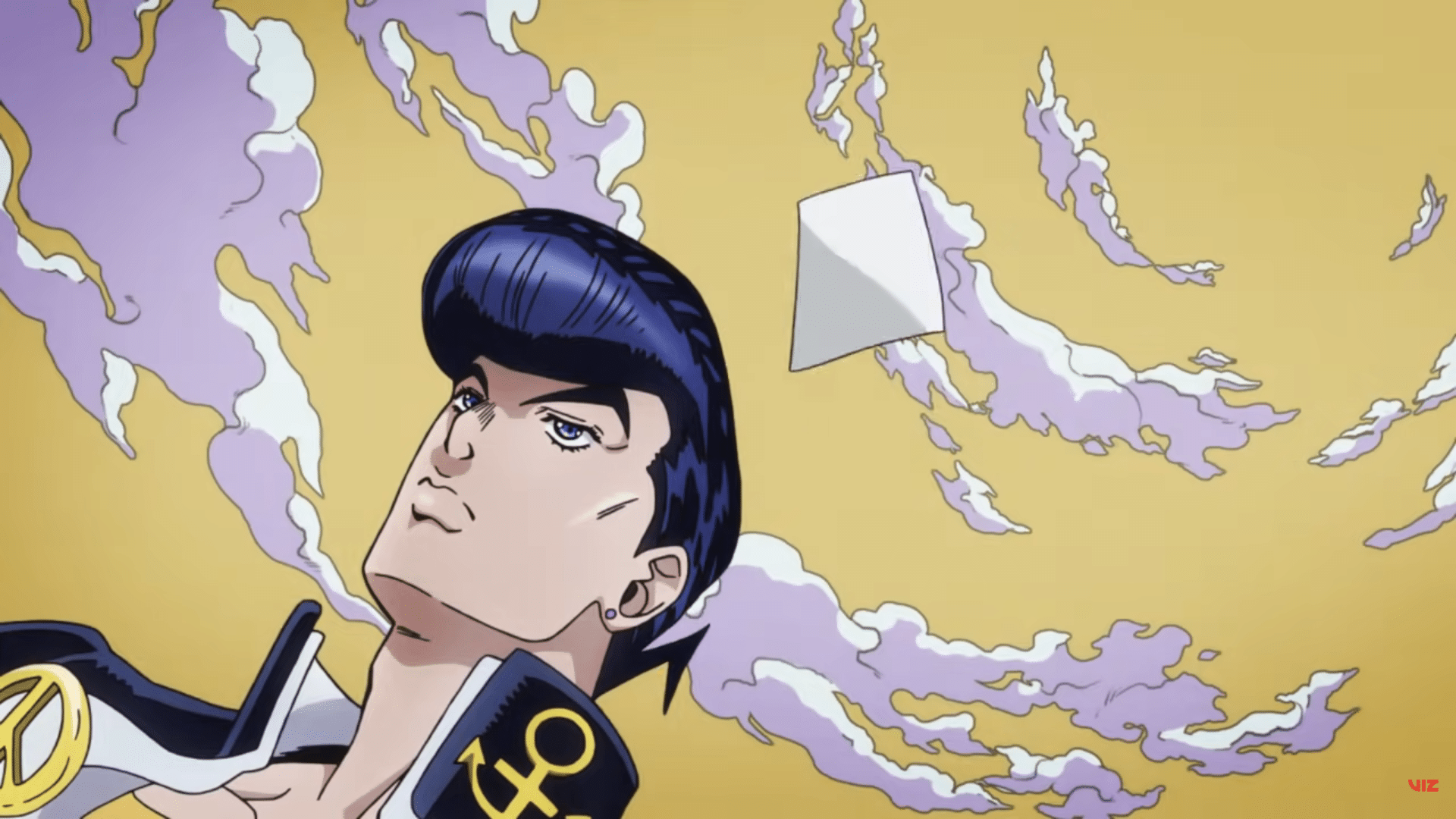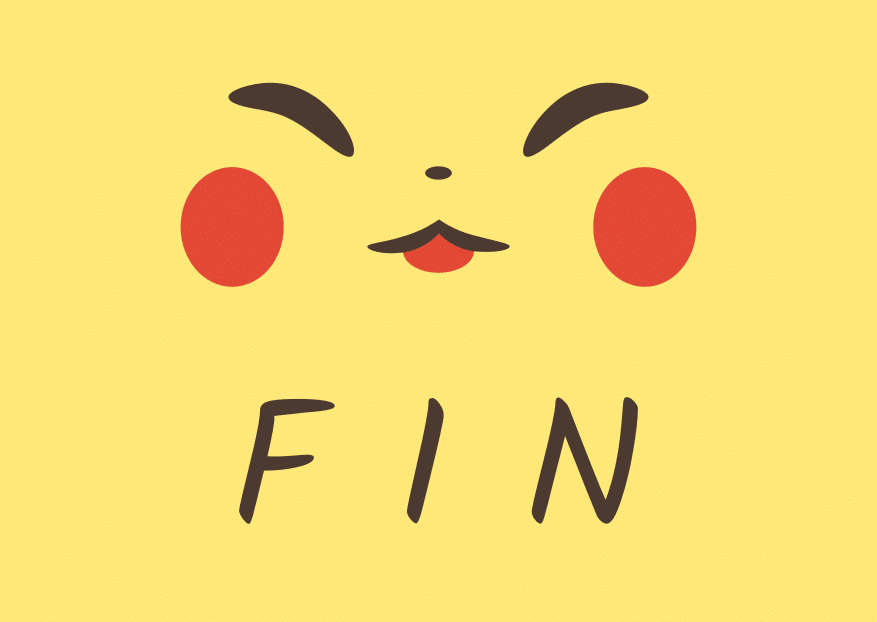Good day, Pokémon Trainers! Have you ever noticed how certain events in Pokémon GO give special attention to a single Pokémon or the community itself tends to hype a new Pokémon up? Have you ever wondered why this Pokémon specifically and what its origins are?
Well, that’s where the Dashing Design series comes in! I’ll be your guide as we take a look at the franchise history, concept, and potential design inspirations of specific Pokémon. Today, let’s put the spotlight on the Pokémon for this week’s spotlight hour, Croagunk!
 Croagunk
Croagunk
Croagunk (Left) and Toxicroak (Right) from Pokémon the Series: Diamond and Pearl. Source: Collected from Bulbapedia
We’re going back to one of the older generations again. As Croagunk is a fourth-generation Pokémon. The fourth generation encompasses the Pokémon Diamond, Pokémon Pearl, Pokémon Platinum, Pokémon HeartGold, and Pokémon SoulSilver line of mainline video games. Croagunk made its first in-game appearance in Pokémon Diamond and Pokémon Pearl, which were released in 2007.
Croagunk certainly seems to have become a favorite for the franchise ever since then. It is mentioned to be the mascot of Pastoria City in the Sinnoh region. This is the region where Pokémon Diamond, Pearl, their remakes, and Platinum take place. A Croagunk also becomes a part of Brock’s team in Episode 8 of Pokémon the Series: Diamond and Pearl.
It even has a significant presence in Pokémon spin-off games. It appears as a playable fighter and support Pokémon in the fighting game Pokkén Tournament DX for the Nintendo Switch. A Croagunk runs a shop in the dungeon crawler games Pokémon Mystery Dungeon: Explorers of Time and Explorers of Darkness. And a Toxicroak, Croagunk’s evolution plays a major role in Pokémon Mystery Dungeon: Gates to Infinity.
And this isn’t counting in all of its other appearances in the anime and various mangas. So ya, Croagunk is everywhere if you care to look. Pokémon GO included as of 2018.
Etymology
Croagunk’s name is rather easy to analyze. It’s a combination of “Croak” (The sound frogs make) and Gunk (A generic name used to describe sticky and unpleasant substances). Quite a fitting name for a poisonous frog Pokémon.
Its Japanese name is significantly different, however. It’s Gureggru. Which may be a combination of “Gureru” (Meaning to turn naught/delinquent) and “Gero” (A repeating gerogerogero sound is the onomatopoeia for the sound frogs make in Japanese). Speaking of which, did you know that Keroro Gunsou (commonly referred to in English as Sgt. Frog) is getting a new anime after all these years? Wow. Well ahem with that digression out of the way, let’s look at Croagunk’s design.
Design
Croagunk With A Hat. Source: Uploaded by GOHub Member kittypokemonsalot
As the etymology implies, Croagunk is a frog. As for what type of frog though, its type combination PoisonFighting gives us some hints. So it clearly takes inspiration from the various poisonous frogs that can be found in the real world, such as the Poisonous Dart Frogs. This would explain Croagunk’s striking blue/teal colors.
But hold on a second, if you notice the middle of Croagunk’s three fingers is a different color. And in fact, when it evolves into Toxicroak it gets them on its feet as well, and even has spiky protrusions on its hands. As such, it could be very likely that Croagunk is inspired by the Wolverine Frog (Yes, that is what it’s called).
Wolverine frogs are so named because they can protrude the bones of their toes outward to attack threats, and then theoretically retract them later slowly. Apparently, another similar type of frog called the Otton Frog also exists. This could also help explain why Croagunk’s signature move is Poison Jab.
The Sacs
Another striking feature of Croagunk is its cheek sacs. According to many Pokédex entries, Croagunk generates and stores its poison in its sacs. However, in reality frogs don’t really contain poison within their sacs. They just have them in order to make their iconic croaking sounds. Which, to be fair, the dex entries also make note of. Such as in the Pearl Pokédex:
Inflating its poison sacs, it makes an eerie blubbering sound for intimidation.
I think it’s also worth taking note of how these sacs on Croagunk look similar to Pikachu’s. Especially when they are not inflated. I believe this is a very intentional decision. As it seems Croagunk was very much made to be a sort of “Mascot Character” within the franchise. We already talked about how it’s treated as the mascot of Pastoria City before. And even in Pokkén Tournament DX, it’s treated as a very mascot-like character. It’s portrayed as mischievous and jolly. And its “Synergy Burst Attack” in the game literally has it pile explosive balloons of itself on its opponent.
Croagunk’s Burst Attack. Source: Pokkén Tournament DX
The Abdomen
The final thing of note is the white pattern on Croagunk’s abdomen. It’s inspired by a Sarashi. In simple terms, a Sarashi is just a patch of cloth, typically made of cotton or linen, that makes up parts of Japanese clothing. In modern pop culture though, Sarashi are often wrapped around in a bandage-like pattern as is. This, along with the references to Delinquency in Croagunk’s Japanese name alludes to another potential inspiration for Croagunk’s design. One which we will iterate on further as we take a look at:
Source: Official Site
Etymologically speaking Toxicroak’s name isn’t particularly interesting, in English or in Japanese. They mostly make note of how Toxicroak is a poisonous frog. So let’s dive headfirst into its design instead.
There’s quite a lot to read from taking just a glance at Toxicroak. Firstly, there’s the claws protruding from its hands which we briefly mentioned while taking a look at Croagunk, and now orange middle toes as well. Not only that, Croagunk’s two poison sacs have now merged into one for Toxicroak. This along with its full-face grin gives it a very pompous and cocky appearance.
Keeping that in mind, I want to draw your attention to the fact that, Toxicroak has two ring patterns on its arms that give the impression of wristbands. And the black lines going through its body make it look like it’s wearing an unbuttoned shirt or jacket. And even the pointy thing on its head sort of looks like spiked or puffed-up hair. This all bring us to an important point of inspiration for Toxicroak:
Banchō
The concept of Banchō has a decently long history. Initially, it was a term referring to a military position. Then it was adopted by what can essentially be described as the leader of “High-School Delinquent Groups” within Japan during the 1900s. This sort of organized adolescent delinquent group doesn’t exist on any sort of large scale in modern times from my understanding. However, the concept stuck.
So the Banchō is a pretty common archetype in Japanese media. And it’s female counterpart is referred to as Sukeban. Just to name a few off the top of my head: Onigawara from Mob Psycho, Ryu from Shaman King, Kuwabara from Yu Yu Hakusho, and Okuyasu and Josuke from Jojo’s Bizarre Adventure come to mind.
Kazuma Kuwabara. Source: Yu Yu Hakusho
Even taking a cursory glance at one of these Banchō characters makes their similarities to Toxicroak and Croagunk very clear. All of the tropes associated with Banchō, the puffed-out Pompadour hairstyle, the Sarashi on the abdomen, the unbuttoned jacket, it’s all there. I was not completely sure when I started my analysis of this Pokémon line but now it’s all too obvious. Croagunk and Toxicroak are definitely inspired by this character archetype. In fact, Croagunk can even be seen doing the iconic delinquent squat:
Croagunk from Pokémon the Series: Diamond and Pearl. Source: Collected from Bulbapedia
Both Croagunk and Toxicroak are also called the “Toxic Mouth” Pokémon. This also makes sense as these Banchō type characters often have a very gruff way of speaking.
A Fighter At Heart?
So we’re here to talk about Dark types for the third time in a row for dashing design. Except, well, Croagunk and Toxicroak aren’t Dark they are Fighting. So what gives, right? Fighting is meant to represent honorable martial arts. So why is a delinquent that relies on Poison also a Fighting type?
It comes back to how Banchō is represented in the media. Sure they could just be your common bad guys. But if given a major role in a story it’s not uncommon for them to change ways and become a vital asset to the protagonists’ group. And it does make sense. After all, by the end of the day, they are just misguided adolescents. So it makes sense that with proper guidance and good company, they can become more virtuous figures.
Higashikata Josuke, Protagonist of JJBA Part 4. Source: Anime Trailer
A misguided character going through hardships and learning to better themselves just makes for very endearing stories. And it’s not like they don’t tend to have good qualities from the get-go either. For example, these types of characters often are shown to have a fierce sense of honor and loyalty. And their experience with the darker parts of the world also gives them greater crisis awareness, allowing them and their companions to avoid trouble whenever possible.
And these dual qualities of a character that can both be a menace but also a strong ally can actually be seen in Toxicroak’s dex entries as well. For example, though most dex entries mention how deadly its poison can be. Others focus on how it can be a fantastic tonic. For example, in the Pokémon Legends: Arceus Pokédex, it is stated:
Its crimson claws contain a virulent toxin. This toxin can be made into a tonic by diluting it, mixing it with several types of wild grass, and boiling it down over two days.
And there we go! The underlying concept behind Croagunk’s design is that of a character archetype that implies simplicity. Yet is very endearing and enduring nonetheless. So, I think it’s only fair that this conclusion is left simple and brief as well. The evil Saturn in the anime might have a Toxicroak, but the protagonist Brock also has a Croagunk. One can be a cause for harm or a cause for good based on how one is raised and treated. This, I believe is the foundational concept behind Croagunk. And this is why, Croagunk’s design, is quite dashing!
Goodbye for now, Pokémon trainers. Priom-out!

